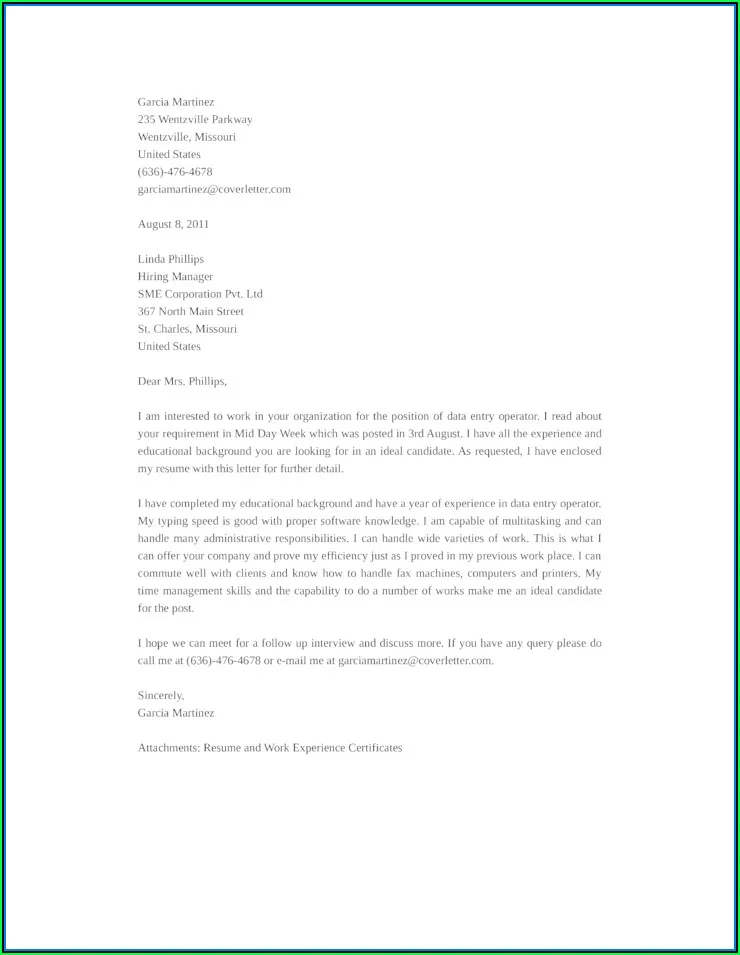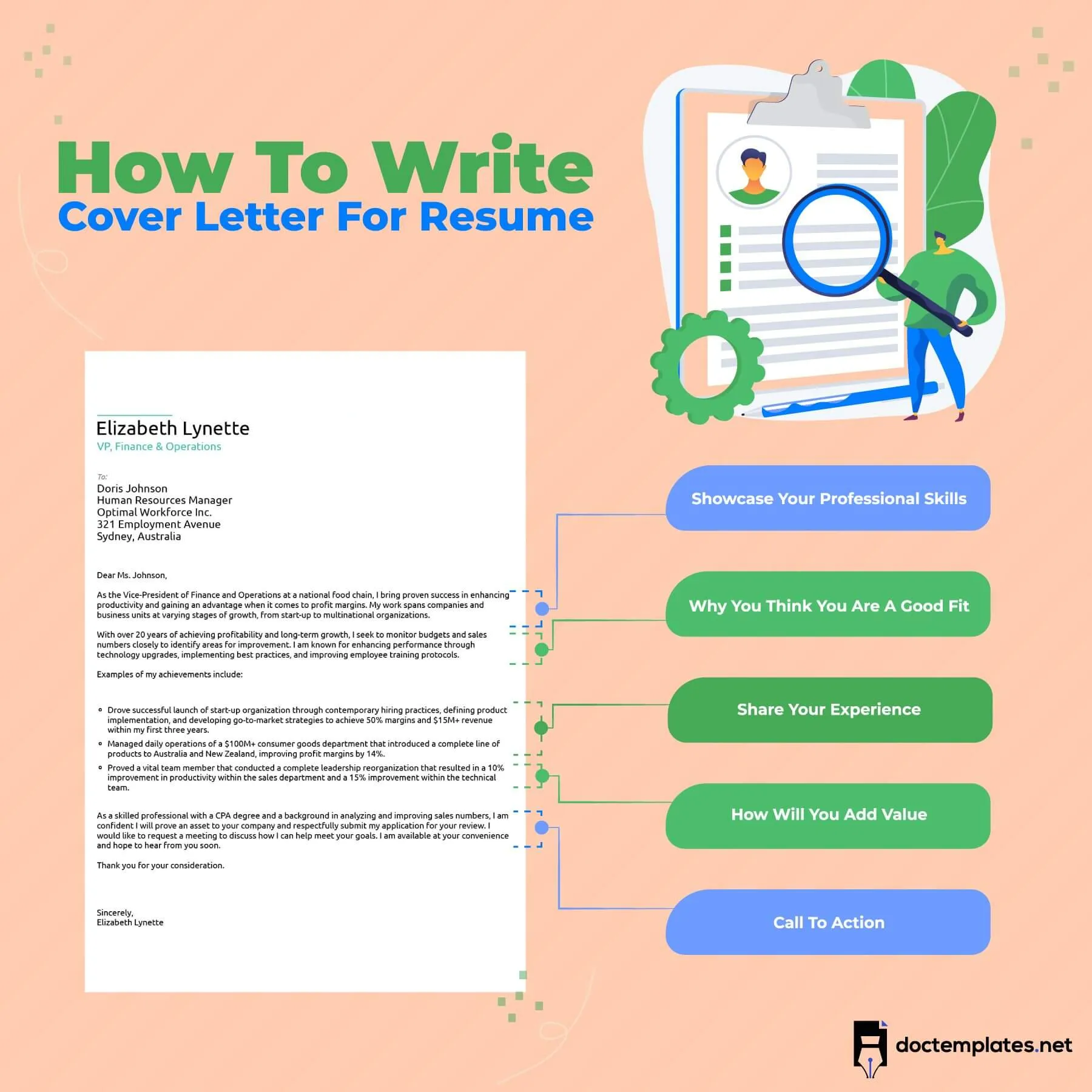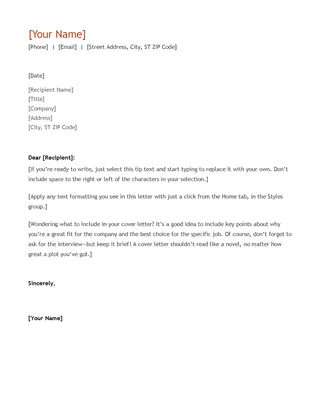What is a Cover Letter and Resume?
Before diving into the how, it’s crucial to understand the what. A resume is a concise summary of your professional and educational background, highlighting your skills, experience, and accomplishments. It serves as a snapshot of your qualifications, providing potential employers with a quick overview of your suitability for a role. A cover letter, on the other hand, is a personalized introduction that accompanies your resume. It allows you to elaborate on your skills, explain your interest in the specific position and company, and demonstrate how your qualifications align with the job requirements. Think of the resume as the ‘what’ and the cover letter as the ‘why’. Both work in tandem to present a complete picture of you as a candidate.
Why is a Cover Letter and Resume Important?
The combination of a resume and cover letter is your primary marketing tool when applying for a job. They are often the first impression you make on a potential employer, making it crucial to present them professionally and effectively. A well-crafted resume highlights your relevant skills and experiences, showcasing your value proposition to the employer. The cover letter allows you to personalize your application, demonstrating your understanding of the role and your enthusiasm for the company. Together, they provide a comprehensive overview of your qualifications, increasing your chances of securing an interview. Many companies use applicant tracking systems (ATS) to scan resumes, so proper formatting and keyword optimization are essential to get past these initial filters.
How to Format Your Resume and Cover Letter

Formatting plays a critical role in how your resume and cover letter are received. Poor formatting can make your documents difficult to read, obscuring your qualifications and leading to them being overlooked. Clear, concise formatting makes it easy for recruiters and hiring managers to quickly scan your documents and identify your key skills and experiences. A professional and well-formatted document reflects your attention to detail and professionalism, setting you apart from other applicants. Always use a consistent font, appropriate spacing, and clear headings and bullet points to enhance readability.
Resume Formatting Essentials
When formatting your resume, aim for a clean and organized layout. Use a professional font like Arial, Calibri, or Times New Roman, keeping the font size between 10 and 12 points. Utilize clear headings such as ‘Contact Information’, ‘Summary/Objective’, ‘Experience’, ‘Education’, and ‘Skills’. Use bullet points to highlight your accomplishments and responsibilities, making it easy to scan. Maintain consistent spacing and margins throughout the document. Tailor your resume to each specific job application by highlighting the most relevant skills and experiences, using keywords from the job description. Keep it concise, ideally one to two pages maximum, depending on your experience level.
Cover Letter Formatting Essentials
Your cover letter should follow a standard business letter format. Begin with your contact information, the date, and the hiring manager’s information. Address the letter to the hiring manager by name, if possible. The body of the letter should consist of a clear introduction, a few paragraphs highlighting your relevant skills and experiences, and a strong conclusion. Use a professional font, maintain consistent spacing, and keep the letter to one page. Proofread carefully for any grammatical errors or typos. Show your enthusiasm for the role and company, and tailor your cover letter to the specific job requirements and the company’s values. Use a formal and respectful tone.
Choosing the Right File Format

The most common and recommended file format for both your resume and cover letter is PDF (Portable Document Format). PDFs preserve the formatting of your documents, ensuring that they appear the same way on any computer or device, regardless of the software used to open them. This prevents any formatting issues that might arise if the recipient doesn’t have the same software or fonts as you. While other formats like .doc or .docx are acceptable, PDFs are generally preferred for their reliability and professional presentation. Always save your documents with clear and descriptive filenames, such as ‘YourName_Resume.pdf’ and ‘YourName_CoverLetter.pdf’.
How to Send Your Cover Letter and Resume via Email
Sending your resume and cover letter via email is a common and efficient method for job applications. It allows you to directly reach the hiring manager or recruiter and can often be faster than traditional mail. The key is to present your application professionally, paying close attention to the email subject line, the body of the email, and how you attach your documents. Ensure that your email is free of errors and reflects the same level of professionalism as your resume and cover letter.
Email Subject Line Strategies
The subject line is the first thing the recipient sees, so it’s crucial to make a good impression. Keep it concise and professional. Include the job title and your name in the subject line, for example, ‘Software Engineer Application - John Smith’. If the job posting provides specific instructions, follow them. Avoid vague subject lines like ‘Resume’ or ‘Job Application’ as they may be overlooked. Always proofread the subject line to ensure there are no typos.
Crafting the Email Body

The email body should serve as a brief introduction and a polite way to introduce your attached documents. Keep it concise and professional, reiterating your interest in the position. Mention where you found the job posting and briefly highlight your key qualifications that align with the job requirements. Express your enthusiasm for the opportunity and make a call to action, such as suggesting a meeting or interview. Avoid using generic phrases and personalize your message to show you’ve done your research. Proofread your email carefully for any errors before sending.
Attaching Your Documents
Always attach your resume and cover letter as separate PDF files. Name your files descriptively, such as ‘YourName_Resume.pdf’ and ‘YourName_CoverLetter.pdf’. Ensure that the files are attached before sending the email. Double-check that you have attached the correct documents. It is also advisable to state in the email body which documents are attached for easy reference. This small step can make a significant difference in how your application is received. Never send large files that could be a problem for the recipient’s inbox.
How to Send Your Cover Letter and Resume Online via Application Platforms
Many companies use online application platforms, where you’ll submit your resume and cover letter. These platforms often streamline the application process, but it’s essential to pay close attention to the specific requirements. This involves understanding how to navigate the platform, upload your documents correctly, and ensure all necessary fields are completed. Following instructions accurately is a must, as it increases your chances of your application being reviewed.
Uploading Your Documents

When uploading your resume and cover letter to an online application platform, follow the instructions carefully. Typically, you will click on a button or link to browse your computer and select the files. Use the correct file format, usually PDF, as instructed. Double-check that the correct files have been uploaded. Some platforms also provide an option to paste your resume content directly into text fields. When you upload your documents, make sure that the filenames are clear and professional. Also, check the platform’s guidelines regarding file size limitations.
Tips for a Successful Submission
Read the job description carefully and tailor your resume and cover letter to match the requirements. Use keywords from the job description throughout your documents. Proofread your documents thoroughly before submitting, checking for any grammatical errors or typos. Check all fields on the online form for accuracy. Ensure your contact information is current. Many platforms also allow you to preview your application before submitting it. Use this feature to verify that your documents have been uploaded correctly and that all information is accurate.
Common Mistakes to Avoid
There are several common mistakes that can hinder your job application. Failing to tailor your resume and cover letter to each specific job is a frequent error. Sending a generic application shows a lack of effort and interest. Including grammatical errors or typos is another critical mistake, as it reflects poorly on your attention to detail. Using an unprofessional email address or subject line can also make a negative impression. Submitting files in the wrong format or failing to follow instructions provided by the employer are also common errors. Make sure that you always proofread and double-check every detail.
Proofreading and Editing

Proofreading and editing are crucial steps in the job application process. Before sending any application materials, thoroughly review your resume, cover letter, and email for any errors. Check for typos, grammatical errors, and formatting inconsistencies. Read your documents aloud to catch any awkward phrasing or sentences. Ask a friend or family member to review your materials for a fresh perspective. Ensure that your contact information is accurate. Proofreading ensures that your application represents you in the best possible light.
Following Up After Submission
After submitting your resume and cover letter, it’s acceptable to follow up, but timing is important. If you don’t hear back within the specified timeframe mentioned in the job posting (or within two weeks if none is specified), you can send a polite follow-up email. In the email, reiterate your interest in the position and briefly mention your qualifications. Avoid being overly persistent. If you don’t receive a response after the follow-up, it may be best to accept that they have selected other candidates. Following up shows your genuine interest, but it’s important to strike the right balance.
